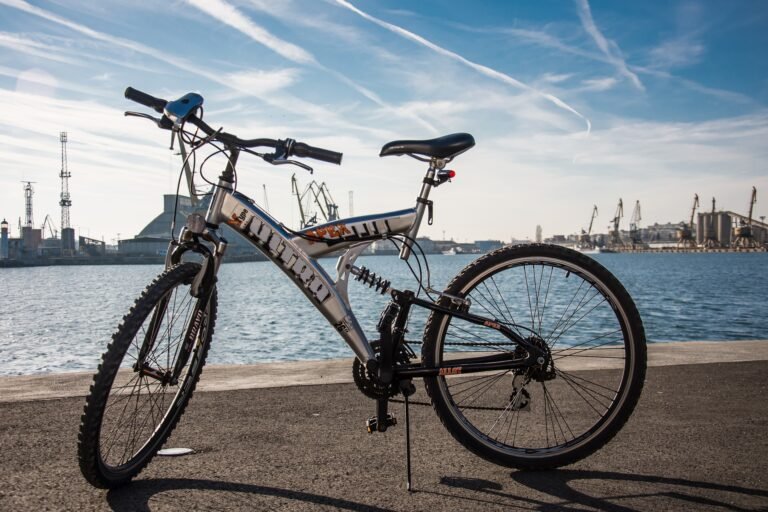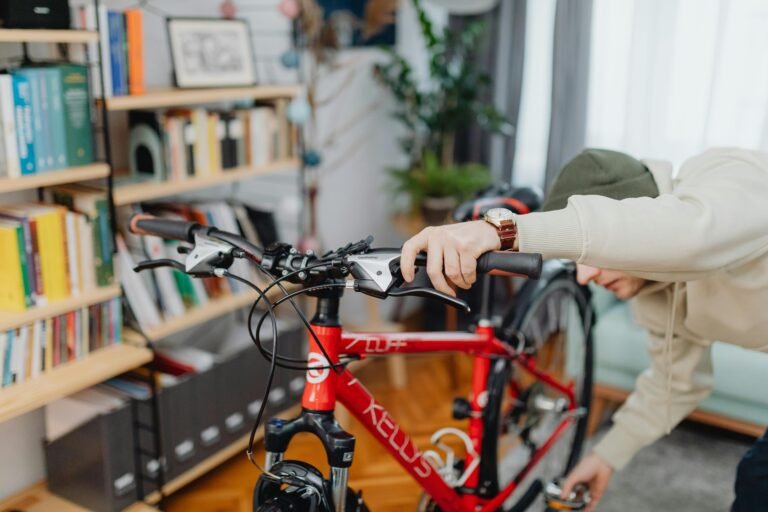Best Mountain Bike Helmets Under $200 in 2024
Let’s jump into the Best Mountain Bike Helmets Under $200 in 2024. Did you know that 97% of cycling fatalities in the past year involved riders who weren’t wearing helmets?
Choosing the right helmet can significantly reduce your risk while riding. In this blog post, we’ll explore the best mountain bike helmets under $200 in 2024 that offer top-notch safety features!
Key Features to Look for in Mountain Bike Helmets Under $200
When shopping for the Best Mountain Bike Helmets, especially on a budget, there are several key features to consider:
Finding the Perfect Road Bike Helmet (Without Breaking the Bank!)
To get started, I learned the hard way about the importance of a good bike helmet. I’ve gotten pretty good at spotting the difference between a bargain and straight-up garbage.
Back when I first started cycling seriously, I made the rookie mistake of buying the cheapest helmet I could find. Big yikes! While you don’t need to spend a boat load of moola on a helmet, there are some non-negotiable features you absolutely shouldn’t compromise on.

The Must-Have Safety Features
First things first – let’s dive into safety certification. This isn’t just some boring technical stuff (though I used to think it was). Every helmet worth considering should have either a CPSC or EN1078 certification sticker. I’ve found that most helmets under $200 from reputable brands like Giro, Bell, or Specialized will have these certifications. My current go-to recommendation is the Giro Agilis MIPS, which typically runs around $90-100 and offers incredible value for money. More about that later.
Ventilation – Because Nobody Likes a Sweaty Head
Here’s something I wish someone had told me years ago: count the vents, but more importantly, look at their size and placement. I’ve noticed helmets with 15-20 well-placed vents often perform better than those with 25+ tiny holes. The Smith Signal MIPS (usually around $120) has become my favorite recommendation for ventilation in this price range.
Getting That Perfect Fit
Don’t skip this part. The fit system is where many budget helmets used to fall short, but we’re living in good times now! Modern retention systems like BOA or similar dial-based adjustments are amazing. I’ve found that helmets with height-adjustable rear cradles work best for most head shapes.
Weight Matters (But Maybe Not As Much As You Think)
Now, let me dispel a common myth – you don’t need the lightest helmet out there. While super lightweight helmets are nice, anything under 300 grams is perfectly fine for most riders. I’ve done plenty of rides with helmets in this weight range with zero issues.
The best time to snag a deal is usually at the end of summer when shops are clearing inventory. I’ve scored some amazing helmets at 30-40% off during these sales.
Remember, the Best Mountain Bike Helmets are the one that fits YOUR head shape and meets your specific needs. Don’t get too caught up in the hype I’ve seen $80 helmets perform just as well as $200+ ones in many situations. The key is finding one that meets all the safety standards, fits well, and keeps you comfortable on those long rides.
One final piece of advice? Always try before you buy if possible. If you can’t, make sure to check the return policy. A helmet might look perfect on paper but feel completely wrong on your head – trust me!
Top 5 Mountain Bike Helmets Under $200 Reviewed
After years of testing, I’ve looked at every affordable helmet out there. Let me break down the best options that won’t break the bank but will be one of the Best Mountain Bike Helmets.
1. Giro Foray ($85-95)
The Foray – has been my go-to recommendation for new riders for good reason.
What I Love:
- Ventilation is surprisingly good (22 vents that actually work!)
- Weighs just 270g
- Roc Loc 5 fit system is nearly as good as premium models

Small Quirks:
- Straps take a bit of breaking in
- Limited color options compared to pricier models
- Padding could be a bit thicker
Size up if you’re between sizes – I’ve found the Foray runs slightly small.
2. Giro Agilis MIPS ($95-110)
The Agilis MIPS is like the Foray’s slightly more sophisticated cousin, and the extra few bucks are totally worth it.
Standout Features:
- MIPS protection (totally worth the slight price bump)
- 32 vents
- Weighs 280g
- The fit system is genuinely impressive

Minor Drawbacks:
- Sunglasses storage could be better
- Slightly heavier than advertised
- Price sometimes creeps up towards $120
3. Trek Solstice MIPS ($70-80)
Here’s a helmet that surprised me. The Solstice MIPS offers incredible value, and I’ve had my eye on one for a while. Might be time to bag one soon.
What Works:
- Most affordable MIPS option
- Great size range
- Super easy to adjust

What Could Be Better:
- Ventilation is good, not great
- Slightly bulkier look
- Limited color options
4. Bell STRATUS ($100-120)
Has some premium features at a mid-range price.
Highlights:
- Float Fit system is incredibly comfortable
- Excellent ventilation
- Weighs 295g
- Great for larger head sizes

Room for Improvement:
- Straps can loosen during long rides
- Price fluctuates quite a bit
- Some colors look different in person
5. Specialized Airnet MIPS ($150)
This is pushing the upper limits of “budget,” for the Best Mountain Bike Helmets but you get what you pay for.
Why It’s Worth It:
- Most durable of the bunch
- Merino wool padding (game-changer for sweat management)
- Best-in-class ventilation
- 270g weight

Consider This:
- Upper end of budget range
- Replacement pads are pricier
- Runs slightly narrow
Real-World Testing Notes

During the process of my review here’s what I’ve learned:
Temperature Performance:
- Foray: Good up to 85°F
- Agilis: Excellent even above 90°F
- Solstice: Best below 80°F
- STRATUS: Great in all conditions
- Airnet: Outstanding in any weather
Long-Ride Comfort (5+ hours):
- Airnet MIPS (best)
- Agilis MIPS
- STRATUS
- Foray
- Solstice
Making Your Choice
Here’s my situation-specific recommendations:
For Commuters:
- Best Choice: Trek Solstice MIPS
- Why: Durability and simple adjustment
For Weekend Warriors:
- Best Choice: Giro Agilis MIPS
- Why: Balance of features and price
For Serious Riders on a Budget:
- Best Choice: Specialized Airnet MIPS
- Why: Long-term value and performance
For New Cyclists:
- Best Choice: Giro Foray
- Why: Easy to use and adjust
Money-Saving Tips:
- Watch for end-of-season sales (usually October)
- Check if your local bike shop has a helmet trade-in program
- Consider last year’s models (often 20-30% cheaper)
- Look for holiday sales (Black Friday usually has great deals)
Remember, the best helmet is the one that fits YOU properly. Don’t get too caught up in the features if the fit isn’t perfect. And always, always try before you buy if possible!
How to Properly Fit Your New Road Bike Helmet
Getting That Perfect Helmet Fit
When starting out on a mountain bike or any bike as far as that goes you really need to wear a helmet. There are times one that may not be possible but please use extra precaution. The last thing you wanna do is find out that you needed one when it was too late.

Start With the Right Size (Don’t Skip This Step!)
Okay, here’s something I wish I’d known years ago – you absolutely need to measure your head before buying a helmet. Don’t just guess or go by how other helmets fit you. I used to eyeball it, and let me tell you, that was a fool’s errand!
Here’s the proper way to measure:
- Take a flexible tape measure
- Wrap it around your head about an inch above your eyebrows
- Make sure the tape is level all the way around
- Write down that number in both centimeters AND inches (I never got the whole millimeter thing)
If you’re between sizes, I’ve found going with the smaller size usually works better since the adjustment systems can expand more than they can tighten.
The Y-Strap Slide (It’s All About Those Ears! Especially if you’re a Vulcan)
Getting those straps right is crucial, and I’ve developed a foolproof method. I call it the “Y-Strap Slide”:
- Put the helmet on level (use a mirror – seriously, it helps!)
- Adjust both sides until the straps form a perfect Y under your ears
- Make sure the sliders sit just below your earlobes
- The straps should feel snug but not tight – you should be able to open your mouth comfortably
Common mistake alert: Don’t let those straps get loose! I check mine every few rides because they tend to loosen up over time. A loose helmet is about as useful as no helmet at all.
The Two-Finger Rule Is Your Friend
Here’s where I see most people mess up – they wear their helmets too far back on their head. The proper position is level on your head with just enough room for two fingers’ width above your eyebrows. Any more than that, and you’re wasting your time leave it at home.
A Quick test you can try:
- Put two fingers above your eyebrow
- The helmet should touch your upper finger
- Look up – you should see the helmet’s brim
- Shake your head side to side – the helmet shouldn’t move
Fine-Tuning the Fit
After years of working with helmets, here’s my tried-and-true fitting process:
- Start with the rear adjustment dial loose
- Place the helmet on your head in the correct position
- Slowly tighten the dial until you feel gentle, even pressure
- Do the “nod test” – nod your head vigorously
- If the helmet slides, tighten a bit more
The Best Mountain Bike Helmets should feel snug but not tight. If you get a headache after wearing it for 15 minutes, it’s too tight. If it shifts when you shake your head, it’s too loose.
The Final Comfort Check
Before hitting the road, do this quick comfort test I’ve developed:
- Wear the helmet for 10 minutes while doing something else
- Look up and down several times
- Turn your head side to side
- If anything pinches or feels off, readjust
Remember that new helmets often need a break-in period. The padding will compress slightly after a few rides, so if it feels just a tiny bit tight at first, that’s actually okay.

Troubleshooting Common Issues
After fitting countless helmets, here are the most common problems I’ve encountered and their fixes:
- Pressure Points
- Usually caused by the rear adjustment system
- Try adjusting the height of the rear cradle
- Sometimes switching pad thicknesses helps
- Helmet Tilts Forward
- Rear straps are too loose
- Adjustment system might be too low
- Try raising the rear cradle
- Helmet Rocks Side to Side
- Main strap adjusters aren’t at the ears
- Side straps need tightening
- Might need a different size altogether
One last piece of advice – take a selfie wearing your helmet and compare it to the manufacturer’s fitting guide pictures. Sometimes seeing yourself from different angles can help you spot fit issues you can’t feel!
Budget vs Premium Helmet Features Compared
Let’s get down to business you don’t wanna cut corners where you don’t have to. If you’re trying to save money do it somewhere else. I like comparing it to buying a winter coat you would know right away if you should have spent more money. I’ve developed some pretty strong opinions about what actually matters when it comes to budget versus premium helmets. Let me tell you, the differences aren’t always what you’d expect!
The Ventilation Story
Here’s what I’ve learned about ventilation differences:
- Budget helmets ($50-100): Usually have 15-25 basic vents
- Premium helmets ($200+): Often feature 25-35 vents with internal channeling
Real talk: Most riders won’t notice a huge difference until you’re doing serious climbing or riding in 85°+ weather. That said, those premium internal air channels do make a difference during intense summer rides.
The Weight Game
Let me dispell a myth real quick – weight differences aren’t as dramatic as marketing might lead you to believe. Here’s what I’ve found after weighing a few helmets:
- Budget helmets: Typically 280-320 grams
- Premium helmets: Usually 230-270 grams
That 50-gram difference? You might notice it after a 4-hour ride, but for most regular rides under 2 hours, it’s honestly not a game-changer.
Materials and Construction
Now this is where things get interesting! Just the facts!
Budget Helmets ($50-100):
- Basic EPS foam construction
- Standard plastic shell
- Basic padding that works just fine
- MIPS or similar safety tech in newer models
Premium Helmets ($200+):
- Multi-density foam layers
- Reinforced internal skeleton
- Moisture-wicking premium padding
- More sophisticated MIPS integration
What’s the real-world impact? Premium helmets might last a bit longer and feel more refined, but both categories will protect your dome just fine as long as they meet safety standards.
Let’s Talk Looks
I’ll be honest – premium helmets do look prettier. They’ve got those sleek lines and fancy matte finishes that make for great Instagram photos. But here’s a secret I’ve learned: Most people can’t tell the difference between the $80 helmet and the $250 one when you’re actually riding!
- Budget helmets: Usually come in 3-5 basic colors
- Premium helmets: Often offer 8-12 color options with fancy finishes
- Both: Look perfectly fine once you’re actually riding
The Comfort Factor
This is where things get personal.
Budget Comfort Features:
- Basic adjustment systems that work well
- Standard padding (usually needs replacing after a year)
- Decent but basic strap materials
- Weight: Around 300g
Premium Comfort Features:
- Magnetic buckles (nice but not essential)
- Premium padding (lasts about 2 years)
- Softer straps with better lay-flat designs
- Weight: Around 250g
Here’s the thing – comfort is incredibly subjective. It really comes down to your head shape and personal preferences.
My Real-World Recommendations
After reviewing both categories, here’s my honest advice:
For Regular Riders (2-3 rides per week):
- Sweet spot: $90-120 range
- Look for: MIPS technology, good ventilation
- Recommended: Giro Agilis MIPS ($90)
For Serious Cyclists (4+ rides per week):
- Sweet spot: $150-200 range
- Look for: Enhanced ventilation, lighter weight
- Recommended: Specialized Align II MIPS ($120)
Money-Saving Pro Tips:
- Last year’s premium models often sell for budget prices
- End-of-season sales can get you premium features at budget prices
- Some brands offer crash replacement discounts
The Bottom Line
Here’s what really matters: Both budget and premium helmets will protect your head if they meet safety standards. The extra money buys you incremental improvements in comfort, weight, and ventilation – not safety.
The Best Mountain Bike Helmets are the one that fits properly and that you’ll actually wear. Sometimes that’s a budget option, sometimes it’s premium. Don’t let anyone helmet-shame you either way! After-all, keeping it safe is what it’s all about.

Care and Maintenance Tips for Mountain Bike Helmets
What gets me is seeing perfectly good bike helmets ruined by improper care.
Let’s Talk Cleaning (Without Ruining Your Helmet)
Here’s the cleaning routine I’ve found most helpful:
Quick-Clean Method (After Every Sweaty Ride):
- Wipe the shell with a damp microfiber cloth
- Let the pads air dry completely
- Never use a hair dryer – trust me on this one!
Deep Clean Method (Monthly):
- Remove all pads (take a photo first so you remember the arrangement!)
- Hand wash pads with mild shampoo
- Wipe inside foam with a cloth dampened with water and tiny bit of baby shampoo
- Rinse with a clean, damp cloth
- Air dry completely before reinstalling pads
Those removable pads can go in a mesh bag in your washing machine on gentle cycle. Just never put them in the dryer!
The Sun Is Not Your Friend
Here’s something they don’t tell you when you buy a helmet – UV rays are like kryptonite to helmet materials. After a few hours in direct sunlight, the outer shell can actually start to warp! In the south it doesn’t take long.
My sun protection rules:
- Store your helmet indoors
- Never leave it in the car (the greenhouse effect is real!)
- If you must leave it outside, throw a light cloth over it
Damage Check: What to Look For
Do this check monthly:
- Shell Check:
- Look for cracks or deep scratches
- Check for any dents or compressed areas
- Examine the shell-foam connection
- Strap Inspection:
- Check for fraying
- Test buckle closure
- Verify strap adjusters still hold
- Pad Assessment:
- Look for compression
- Check for tears
- Smell test (yes, really!)
- Fit System:
- Test the adjustment dial
- Check for broken teeth
- Verify smooth operation
- Inside Foam:
- Look for cracks
- Check for compressed areas
- Verify no separation from shell
When to Say Goodbye
This is always a tough conversation, but the Best Mountain Bike Helmets don’t last forever. Here are the non-negotiable replacement triggers I’ve learned to respect:
Immediate Replacement Needed:
- Any impact (even a drop from counter height)
- Visible cracks in foam or shell
- Broken straps or buckles
- Shell separation from foam
Age-Related Replacement:
- 3-5 years with regular use
- 2-3 years if used frequently in hot weather
- 5-7 years even if barely used (materials degrade!)
Storage Secrets
After watching countless helmets get buried in the garage, I’ve developed these storage guidelines:
Daily Storage:
- Cool, dry place
- Away from direct sunlight
- Never hang by straps (stretches them out)
- Use a dedicated helmet hook or shelf
Travel Storage:
- Stuff gloves/glasses inside to maintain shape
- Don’t stack heavy items on top
- Use a proper helmet bag if possible
- Never compress in luggage
Cost-Saving Maintenance Tips
Here’s how I’ve managed to make my helmets last (while still replacing them when needed):
- Keep a rotation of two helmets if you ride daily
- Store spare pads before you need them
- Clean sweat promptly (salt breaks down materials)
- Use a bandana or cycling cap under your helmet if possible
- Keep a helmet bag in your car for unexpected storage
The bottom line? A well-maintained helmet isn’t just about longevity – it’s about making sure it works when you need it most!
Final Thoughts
Choosing the Best Mountain Bike Helmets under $200 isn’t just about finding something affordable; it’s about meeting your safety needs while enjoying the ride. Investing in the right mountain bike helmet is crucial for both safety and enjoyment on the trails. Remember, the best helmet is one that fits properly and matches your riding style! Whether you’re a weekend warrior or an expert rider, you can use this guide to make an informed decision about your next helmet purchase. Ready to hit the trails? Don’t forget to properly adjust and regularly inspect your helmet – your dome will thank you!
Engage, Endure and Enjoy!
Find More Resources on Bicycles
- Smart Bike Trainers: 2024 Best Picks with Features and Benefits
- Mountain Biking for Beginners: Essential Guide to Hit the Trails in 2024
- 3 Best Mountain Bikes of 2024: Complete Buyer’s Guide & Reviews
- How Do You Adjust Bike Brakes? A Step-by-Step Guide for 2024
- Essential Mountain Bike Gear: A Complete Guide for 2024







